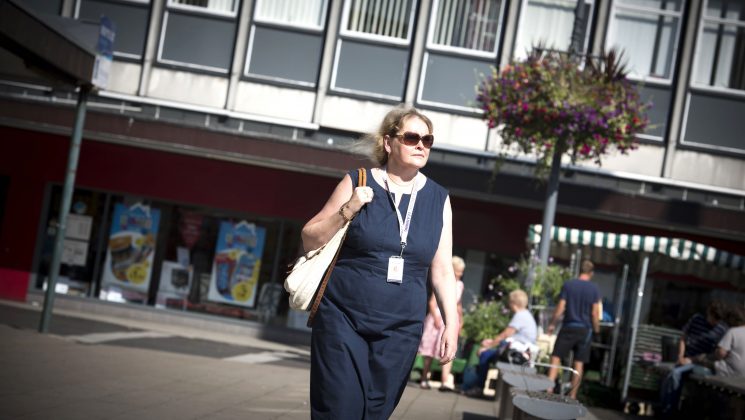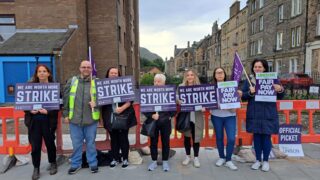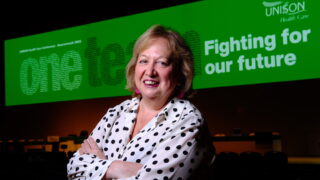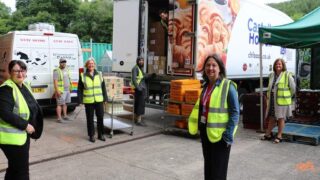Jo Robertson was recently inside the home of a dead man she’d never met. There were messages on the answerphone, so she pressed play and a male American voice cheerfully said, “Hi, how are you?”
The next message was the same voice, asking if the man was OK because he hadn’t called him back. A third message said, “What’s going on? Please get back to me”. Finally, the friend’s fourth message said, “Something must have happened. If anyone is listening to this please contact me.”
Jo wasn’t trespassing. She was in the dead man’s home because she’s an environmental health officer – a job, it turns out, that involves some very unusual activities.
Environmental health officers have legal powers similar to the police, and their work has an impact on all of our lives, yet most of us know little about what they actually do. So UNISON went to Stevenage to meet long-time UNISON member Jo on her local patch, and find out exactly what her extraordinary job involves.
Have you ever wondered what happens when someone dies without any relatives around them? Well, that’s where Jo gets involved. When a patient at the local Lister Hospital dies and they don’t have a relative or friend with them, the hospital’s bereavement office will ring Jo’s team, and that kicks off a process of detective work that can last several weeks.
When you have eliminated the impossible, whatever remains – however improbable – must be the truth
Usually the deceased person’s house keys will be with their belongings in the hospital. If not, Jo and her colleagues will have to gain access to the property through other means, such as the council or a housing association. Then they go into the home and search through the person’s belongings.
They’ll spend hours in the home looking through desks and drawers, opening letters and listening to answerphone messages. They’re looking for anything that will give them a clue to the person’s loved ones, so they can let them know they’ve died. Jo is quite matter-of-fact about the process, but says she can’t help being affected by it sometimes.
“We search through all their possessions, which is a strange feeling when you’ve never met the person. Obviously we focus on bank statements and all of the documentation, but we’re surrounded by their personal possessions – their pictures, their books, what makes them who they are.”
After listening to the answerphone messages, Jo then looked through the man’s belongings and found birthday and father’s day cards. Eventually they tracked down the contact details for a son who lived in London and got in touch with him to let him know his father had passed away. This was one of the more straightforward cases though; sometimes it’s a lot harder.
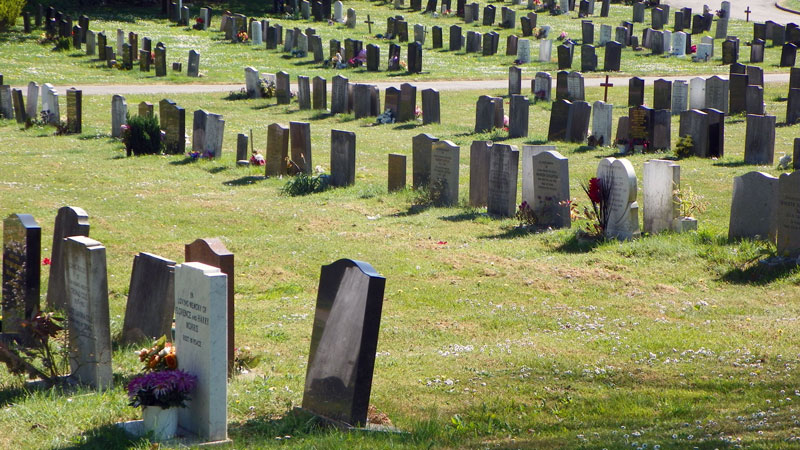
Jo’s colleague Scott Chapman is a senior environmental health technical officer, and he tells me about a case he recently worked on.
A young homeless man had died and Scott had to track down his family. A friend of the man told him his mother was alive, but they had no idea where she was living. They tried everything to track her down, with no luck, so they had to employ an heir hunting company.
Similar to the companies on the BBC’s Heir Hunters programme, these specialise in tracing next of kin. It turned out Scott had been given the wrong spelling of the young man’s name, and his mother had married and changed her name, which is why it was so difficult to track her down. Eventually the heir hunters found her, and Scott made the call to let her know her son had passed away.
Scott’s a cheerful and chatty man, but he looks serious when I ask him about the call, and says it was one of the hardest he’s had to make.
As well as notifying people of deaths, the environmental health officers are also looking for someone who is able to pay for the funeral. Sadly, sometimes people just can’t afford the cost – the most basic funeral can cost £1,600. Under the Public Health (Control of Disease) Act of 1984, it is then the duty of the council to make arrangements for the funeral or cremation.
‘Bona Vacantia’ is the legal term for when a person dies without leaving a will and there is no known next of kin who can take ownership of the property and possessions. When that happens in Stevenage, it’s over to Jo and the environmental health team.
So what are these funerals like, when no one is able to pay? Scott says it depends. When friends and family are there it’s like any other funeral. Some show their grief more than others. At the funerals where there are no loved ones attending, it’s just Jo or Scott, the funeral director and the cemetery manager. In those situations there are no readings and no grave markings, it’s just a case of signing forms.

They may have to deal with death, but environmental health officers are also busy saving our lives. They’re not doctors or paramedics, but they have a vital role to play in our health (above, Jo collects one of the air filters that are attached to lamp posts around Stevenage to monitor air quality.)
If a GP surgery gets more than two cases of what’s known as a ‘notifiable disease’ they alert Public Health England, who then contact the local environmental health office, and it’s up to the officers to work out what is causing the outbreak.
Recently a doctors’ surgery in Stevenage needed help from Jo and the team. They said very young children were coming into the surgery with symptoms of salmonella. Jo got on the case and found out that the toddlers all attended the same nursery. After inspecting the nursery they thought they found the culprit – and it wasn’t the nursery canteen.
Jo and Scott say their job is a lot like detective work. As Scott puts it, “It’s a bit like Sherlock Holmes’s famous words: ‘When you have eliminated the impossible, whatever remains, however improbable, must be the truth.’”
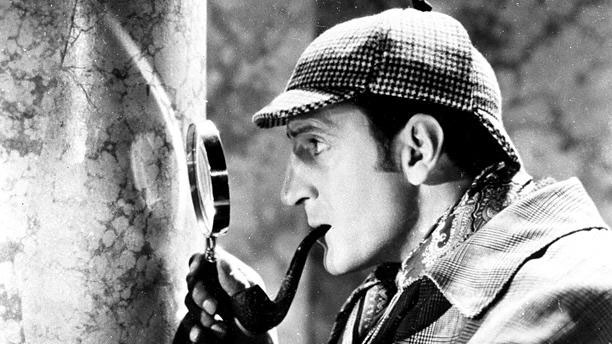
I see what they mean. After eliminating the impossible, the team found that the nursery had a pet tortoise. Poor Queenie was infected with salmonella, and whenever the children played with her she was shedding bacteria onto them. Luckily all the children were fine. The nursery was given some guidance on keeping pets, and Queenie was treated and moved to a new home.
When I tell Jo and Scott that I think salmonella comes from eggs, they laugh and promptly give me a lesson in food poisoning that quashes everything I thought I knew. Think it was that dodgy Chinese you ate last night? It wasn’t.
I believe a healthy dose of germs does you good… But everyone else’s kitchen has got to be spotless
Apparently most food poisoning is caused by something you ate up to two weeks ago, and sometimes even longer. Campylobacter (the most common cause of bacterial foodborne illness) takes 10 days to gestate in your gut and it can take 30 days for you to feel the impact of listeria, a bacterium that causes a serious infection called listeriosis. Sometimes food isn’t even the culprit. If you’ve visited a farm or gone swimming in the last few weeks and you’re feeling poorly, you should consider that a possible cause too.
The detective work involved means environmental health officers have to know an awful lot; Jo and Scott seem to have endless, detailed knowledge on noise levels, traffic pollution, food poisoning and more. On top of all that, Jo also gets involved in public health promotion.
Recently a trend for DIY-tattooing took hold in Stevenage. People with no experience or training in tattoos were buying tattoo machines from eBay and getting busy with ink. Jo ran an awareness campaign to highlight the risk of contracting blood-born viruses like hepatitis, advising people to use the professional tattoo parlours that she and her colleagues inspect and know are clean.
With all our talk of germs I assume Jo and Scott must have the cleanest kitchens in the world. When I ask her Jo smiles and says, “Actually I have two dogs. I believe a healthy dose of germs does you good… But everyone else’s kitchen has got to be spotless.”
Photos: Marcus Rose

